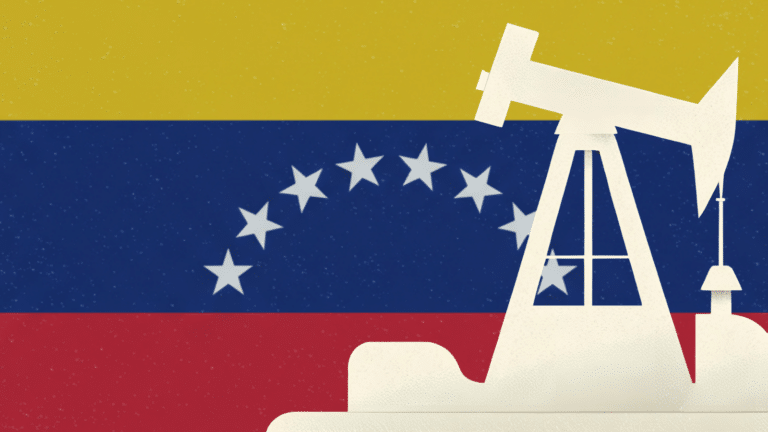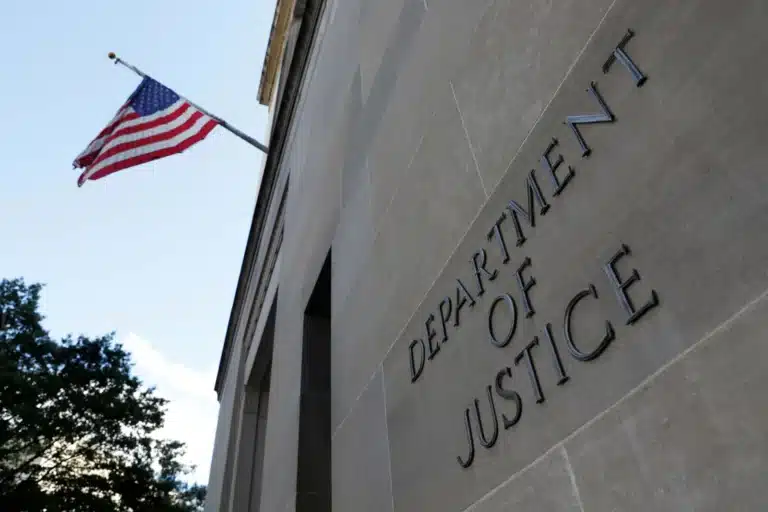The following keynote address was delivered by Daniel Yergin at a recent CGEP event titled, “The 1973 Energy Crisis: The Oil Embargo and the New Age of Energy.”
The 1973 oil embargo shook the global energy market. It also reset geopolitics, reordered the global economy, and introduced the modern energy era. The crisis and the iconic photographs of angry motorists fuming in gas lines are often evoked when oil and gasoline prices spike. But those dramatic events have retained a wider imminence and relevance. The consequences set the course of so much that has happened since in terms of government policies, investment, and innovation. It has remained the benchmark against which energy developments are judged.
The 1973 crisis stands out historically because it was so distinctive and so tumultuous, and had such far-reaching impact. Although seen as a single crisis, it actually represented a convergence of three different crises. One was geopolitical, and one energy. The third was a political crisis in the United States that resonates for American politics today.
The current crisis that began with the Hamas invasion of southern Israel on Saturday, October 7, has brought 1973 into even sharper focus. For Hamas deliberately chose the 50th anniversary of the Yom Kippur War to launch its assault. And, as in 1973, it was timed not only for the Jewish Sabbath but also for the holiday of Shemini Atzeret, when people are not supposed to work and instead be with family—and, in this case, when the guard would be down. Once again, as in 1973, the attack represented a massive failure of intelligence and preparedness on Israel’s part.
Yet of course so much is different. World oil demand today is more than twice what it was in 1973, and the United States is the largest producer of oil, not, as it was in 1973, the world’s largest petroleum importer. At the time, oil was 50 percent of world energy consumption. Now it’s about a third.
Trying to weaponize energy is not a thing of the past. Vladimir Putin sought to use the “gas weapon” against Europe to split the Ukraine coalition, but it failed. But, as for the “oil weapon,” the context that generated it is past. The major Arab Gulf producers, unlike in 1973, are thoroughly integrated into the global economy and have been in various states of dialogue with Israel. Yet the risk remains in terms of escalation, whether the conflict spreads, the potential for disruption, and how that would affect flows of oil and natural gas and the infrastructures that enable those flows.
But what actually happened in 1973? And why? These are the questions I take up here, along with thoughts about the relevant and lasting lessons of that complex crisis.
A Strategic Commodity
Oil had been recognized as a strategic commodity ever since World War I. That war that had begun with calvary charges and rigid railroad schedules ended with tanks, trucks, and airplanes. The enormous change was captured in the words of Britain’s Lord Curzon at a banquet just after the war: “The Allied cause,” he said, “floated to victory on a wave of oil.” A critical dimension of World War II was the oil war. Petroleum from the United States was absolutely essential; six out of every seven barrels of oil used by the Allies came from the United States. In the Atlantic, German U-boats had sought to sink the tankers carrying oil from the United States to Europe. And in the Pacific, one of the US Navy’s priorities was severing Japan’s supply lines for oil. The criticality of oil was subsequently demonstrated by the disruption of oil supplies to Europe during both the 1956 Suez crisis and the 1967 Six-Day War.
During the Six-Day War in 1967, Arab oil exporters had sought to mobilize the “oil weapon”—that is, level an embargo against western countries to pressure them to cease support for Israel. But the weapon misfired. At that time, the oil market was in surplus, and the United States had spare capacity—additional oil production capacity that was not in use, but that could be mobilized against an embargo.
The Energy Crisis
But over the next half-decade, market dynamics changed dramatically. The post–World War II “economic miracles” of Europe’s and Japan’s rapid growth accelerated demand for oil, and cheap oil in turn had fueled that economic growth. Between 1960 and 1972, world oil consumption more than doubled. Environment was a further driver of demand. Oil was being used to replace coal in electric generation in order to reduce air pollution, including in New York City, where imports of low-sulfur oil from Nigeria pushed out coal.
Overall, on a global basis, supply simply could not keep up with demand in those years. Low prices and price controls were not stimulating the required investment. And circumstances were rapidly changing in US oil fields. The great stabilizer in the world market had been that US spare capacity—regulated most notably in Texas by the Texas Railroad Commission and by similar commissions in other oil-producing states. The Texas commission set production levels—so-called allowables—below the actual capacity of the wells it regulated. The reason, going back to the 1930s, was to prevent the overproduction and waste that had driven prices in the 1930s down to as low as 10 cents a barrel. The effect of limiting production was to create a “strategic oil reserve” that could be used in an emergency, although no one thought to call it that.
“A Genuine Energy Crisis”
But in 1971, with world demand surging, the Texas Railroad Commission removed limits, permitting production at 100 percent of capacity. “We feel this to be an historic occasion,” said the chairman of the commission. “Damned historic and a sad one. Texas oil fields have been like a reliable old warrior … That old warrior can’t rise anymore.” Yet even US oil production at full throttle was not enough. By 1973, the United States was importing more than a third of its oil.
It was not only oil that was becoming in short supply. Interstate natural gas prices were regulated by the federal government, and they were set at so low a level as to discourage investment in new supplies. Beginning in the winter of 1969–70, the coldest winter in three decades, there were shortages, disruptions, and the shuttering of factories.
Already by the spring of 1973, there was talk of “energy crises,” including by President Nixon himself, who said, “If present trends continue unchecked, we could face a genuine energy crisis.” Yet there was little imagination of what a “genuine energy crisis” would actually look like. Even as the United States became more dependent on imported oil, there was not much recognition of the country’s growing role as a consumer and how rising US imports would compound the market pressures coming from the economic miracles in Europe and Japan. Major new oil reserves had been discovered in Alaska, but it was impossible to get approval to build a pipeline until, in the summer of 1973, Vice President Spiro Agnew used his position as president of the Senate to break a key tie vote and help move forward consideration of the pipeline that was essential to move the newly discovered oil from the North Slope.
On the supply side, oil-exporting countries were mobilizing to increase their share of revenues and assert greater control—or outright nationalization. The time of concessions was coming to an end. Until the 1970s, the companies had set the “posted,” or official, price for oil. But now the exporting countries were determined to take control of pricing. Tense negotiations in Tripoli and Tehran led to increases in the price of oil—but those increases were still in increments that could be measured in dimes or quarters, 35 cents or 90 cents. The United States and its allies, warned a US embassy official who was monitoring the negotiations in Tripoli, were unprepared intellectually and politically to “deal with the changed balance of power in the petroleum supply situation.”
The exporters were able to achieve their goals because the balance between supply and demand had so narrowed. In April 1973, another State Department official published an article in Foreign Affairs whose title told all: “The Oil Crisis: This Time the Wolf Is Here.” Yet there was hardly broad agreement. Another influential foreign policy journal published an article declaring that “the world ‘energy crisis’ or ‘energy shortage’ is a fiction.”
By the third quarter of 1973, the market was very tight, with only about 1 percent of spare capacity, which basically meant that there was no spare capacity at all. In other words, there was no buffer, nothing to call on in the event of a disruption of any kind. An industry newsletter reported “near panic-buying” in the world oil market. At the end of September 1973, the Japanese prime minister warned that an oil crisis could come in 10 years. As things turned out, it was to come within 10 days.
The Geopolitical Crisis
The trigger was the geopolitical crisis. The 1967 Six-Day War had changed the balance in the Middle East. Israel had taken control of the Sinai Peninsula, the West Bank, the Golan Heights, and East Jerusalem. Egyptian president Gamal Abdel Nasser was the great advocate of pan-Arabism, and his voice denouncing the existence of Israel resounded on transistor radios across the Middle East. Nasser died in 1970, leaving his successor, Anwar Sadat, in his shadow.
But Sadat was determined to reverse the outcome of the 1967 war. He concluded that the only way do that, to compel negotiations with Israel, was with a new war. Syria was with him. By August 1973, he had persuaded Saudi Arabia’s King Faisal to consider integrating the oil weapon into an overall war plan. The king, who remembered its failure in 1967 and the consequent costs in terms of lost revenues, now recognized that the dramatic shift in the world market would provide the fire power necessary to wield the oil weapon. The essential fact was that, between 1967 and 1973, Saudi Arabia, and not the United States, had become the swing producer in a market that was very tight.
The war was unleashed on October 6, 1973, aiming for maximum surprise by launching it on Yom Kippur, the holiest Jewish holiday. Israel was caught totally unprepared. The massive intelligence failure would subsequently be subject to much review. One reason was the oft-repeated failure of imagination. Another was the excessive self-confidence and complacency that came from the outcome of the Six-Day War, just six years earlier. But also there had been two previous feints by Egyptian forces during 1973 to which Israel had mobilized, leading to much political criticism for the costs and apparent waste of money.
Faced with the onslaught, Israel’s military fell back, disordered. It was quickly exhausting its arsenal of weapons. The Israelis desperately pleaded with Washington for more arms. Its very existence was at stake. The Soviets were resupplying their Syrian ally; and, in Henry Kissinger’s formulation, a US ally could not be allowed to be defeated by Soviet arms.
The United States mounted an airlift. But there was the unanticipated matter of the winds. Defense Secretary James Schlesinger told me about the winds when I was researching The Prize. The giant C-5A cargo planes were meant to land in Israel under cover of night, supposedly to be less visible and thus less provocative to the Arabs. But the planes’ departures were delayed owing to crosswinds in the Azores, where they were to be refueled, and they ended up landing in daylight. With that, there could be no doubt that the United States was coming to the aid of Israel.
Ten days after the start of the war, the OPEC countries met in Vienna. It was no longer a matter of 35 cents or 90 cents a barrel. They increased the price by 70 percent. The next day Arab oil exporters met in Kuwait. In response to the US support for Israel, made so clear by the C-5A transport planes, they agreed on a plan for an embargo. They would cut back on their production by 5 percent a month. The United States and the Netherlands were singled out for complete embargoes. The oil market went into fevered panic as companies desperately competed for supplies.
The Domestic Political Crisis
One can clearly trace the energy crisis and the geopolitical crisis. More difficult to assess is what impact resulted from the fact that the United States was gripped in a domestic political crisis, Watergate, which went to the heart of the legitimacy and authority of the presidency. Would there have been a different outcome if there had been a president in command rather than in retreat? Would the United States have been able to play a more decisive role, and would the rest of the world have thought differently about the United States? It was a relevant question then—and it is a relevant question today, as other countries and groups seek to make sense of the disarray in Washington and come to their conclusions.
Richard Nixon was clearly destined to win in an enormous landslide against George McGovern in the 1972 presidential election. But that assuredness was not enough for the Nixon campaign. Agents of the campaign were arrested breaking into the headquarters of the Democratic Party in the Watergate complex in Washington, DC, in June 1972. Although Nixon tried to dismiss the incident as a “third rate burglary,” the break-in would lead to the unraveling of a series of criminal activities and coverups that became known as Watergate and that would dominate, indeed grip, national politics.
By October of 1973, the investigations and revelations were dominating Nixon’s agenda and undermining his authority. Amid the crises unfolding in the Middle East and the global energy market, Nixon was preoccupied with his own political survival. The juxtaposition of Watergate with events unfolding on the world stage remains jarring to this day.
Three days after the start of the war, while the Israeli prime minister was signaling that she might fly to Washington to seek more aid, Nixon was dealing with the resignation of his vice president, who had become ensnared in his own web of corruption. While Henry Kissinger was in Moscow trying to negotiate a cease-fire plan with the Soviets, Nixon fired the Watergate special prosecutor; thereupon the attorney general and deputy attorney general resigned, in what became known as the Saturday Night Massacre. A few days later, when senior officials met to consider alarming news that the Soviet Union was possibly sending nuclear weapons to its Mideast allies, Nixon was, in the words of one official, “too distraught” to participate. As one memo at the time put it, there was “no functional president.” Henry Kissinger—both national security assistant and secretary of state—became the embodiment of legitimacy. In his recent book on Kissinger’s diplomacy, Martin Indyk observes that Nixon’s preoccupation with his “Watergate woes” enabled Kissinger “to function in the president’s place for most of the time.”
The crisis reached its climax in the last week of October, when Soviet ships seemed to be moving in a belligerent pattern in the Mediterranean and nuclear material was detected on a Soviet freighter headed into the Mediterranean. In response, the state of US forces was raised to DEFCON 3, nuclear alert. It appeared that the United States and the Soviet Union were on course for a head-on confrontation. In yet another jarring juxtaposition, at the same time DEFCON 3 was initiated, the House Judiciary Committee announced that it would begin impeachment hearings.
But within a few days, Kissinger’s diplomacy paid off: a cease-fire went into effect, Egyptian and Israeli military leaders met for direct talks, and the tension between the United States and the Soviet Union eased.
The cease-fire was the beginning of the end of the geopolitical crisis. Almost exactly three years later, Anwar Sadat was in Israel to address the Israeli parliament. This was followed by the Camp David Accords and then, in 1979, a peace treaty between Israel and Egypt, which brought that geopolitical crisis to an end. But a new geopolitical crisis was beginning at the same time—the Iranian Revolution that toppled the Shah of Iran and established the Islamic Republic. It has proved to be a very long-lived crisis—the consequences of which are acutely felt to this very current hour.
The political crisis ended in August 1974 with the resignation of Richard Nixon. Gerald Ford became president, declaring on the day of his accession, “Our long nightmare is over, the Constitution works.”
What was not over was the energy crisis. Indeed, the 1970s would prove to be the “energy crisis decade.” In December 1973, with panic gripping the world oil market, OPEC raised the price of a barrel—which three years earlier had been $1.80—to $11.65. In today’s dollars, that meant going from $14 a barrel to $80 a barrel. Not too far from where the price has been recently. In the United States, the spike in oil prices and gas lines fueled public fury. It was not recognized that the main reason for the gas lines was the inability of markets to respond, owing to the fact that the energy market in the United States was an administrated market. An inflexible government allocation system for gasoline distribution resulted in shortages in some areas and oversupply in others. This was compounded by government regulation of the prices of oil and natural gas. The market had little flexibility to adjust.
Henry Kissinger spent months on his shuttle diplomacy working toward Middle East peace. But both Sadat and Kissinger recognized that the United States could not continue its Middle East negotiations with an embargo still in place. On March 18, 1974, the Arab oil ministers agreed to end the embargo, in response, they said, to “continued US efforts toward peace in the Middle East.”
But energy continued to dominate the rest of the decade. It was the major source of political discord in the United States in the 1970s. Jimmy Carter made energy the centerpiece of his administration. The decade ended with another major disruption in the world oil market, owing to the revolution in Iran.
Given the enormous impact of the embargo, it is noteworthy to observe that the actual amount of oil, on a net basis, removed from the market was 9 percent of total supply and 14 percent of internationally traded oil. But that was not known at the time. What buyers faced was great uncertainty, poor information, disruption of traditional supply arrangements, panicking governments and companies and trading houses, publics both furious and fearful, disrupted supply arrangements, and a mad scramble among buyers to snatch cargos before someone else did.
Lessons for Today
Though the circumstances are very different today, there are lasting lessons from the crisis—lessons that are relevant for today.
One is the importance of continued focus on energy security, and that includes resilience in the system. Churchill’s comment to the British parliament in a 1913 debate on oil policy remains a fundamental maxim for energy security: “Safety and certainty in oil,” he said, “lie in variety and variety alone.” In other words, diversification. When markets are relaxed, it is all too easy to let energy security slide off the table.
A second lesson is the need for transparency and high-quality information about supply and demand and what is actually happening in the market. That would reduce the panic and confusion that makes things worse as well as the search for scapegoats that diverts from problem-solving.
A third is about the importance of international collaboration and communication to avoid bruising competition that makes a difficult situation more difficult.
A fourth is about markets themselves. The pressures and temptations are many for governments to intervene, to try to manage markets, to control prices. But such intervention often comes at a high price, distorting supply and demand and preventing markets from adjusting. Flexible markets, the ability to absorb shocks and adapt, are one of the foundations of energy security.
A fifth lesson, so clearly demonstrated by Watergate, is that when Washington is distracted and in disarray, the world is a more dangerous place. Such was the situation in 1973. And who would say such is not the case today?
Daniel Yergin is vice chairman of S&P Global. His most recent book is The New Map: Energy, Climate, and the Clash of Nations. He is also the author of The Quest and The Prize: The Epic Quest for Oil, Money, and Power, for which he was awarded the Pulitzer Prize. He is a member of the Advisory Board of the Center on Global Energy Policy.





